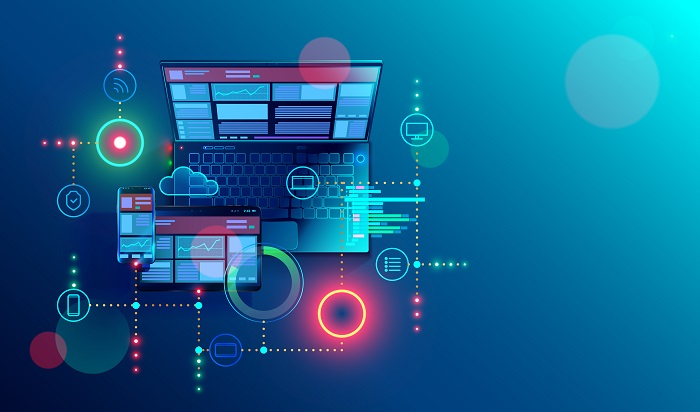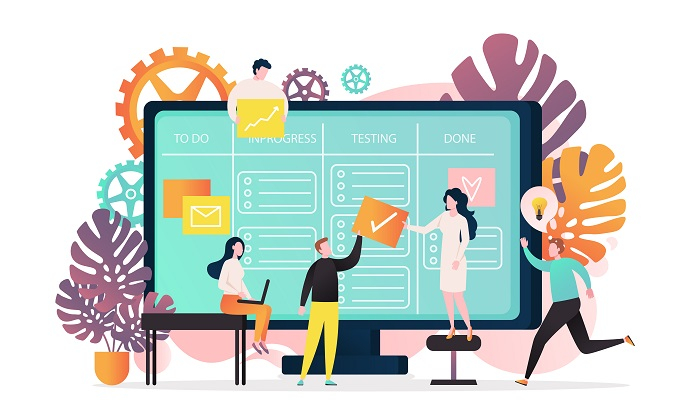
 Data Structure
Data Structure Networking
Networking RDBMS
RDBMS Operating System
Operating System Java
Java MS Excel
MS Excel iOS
iOS HTML
HTML CSS
CSS Android
Android Python
Python C Programming
C Programming C++
C++ C#
C# MongoDB
MongoDB MySQL
MySQL Javascript
Javascript PHP
PHP
- Selected Reading
- UPSC IAS Exams Notes
- Developer's Best Practices
- Questions and Answers
- Effective Resume Writing
- HR Interview Questions
- Computer Glossary
- Who is Who
All About a Digital Project
A digital project is a way to create a professional-looking document that can be shared with others, edited, and updated regularly. A successful digital project involves many steps that are followed for it to function properly. In this article, we will discuss what exactly goes into creating an effective digital project.

What is a Digital Project?
A digital project is a project that is developed using digital tools. Digital projects are often associated with the use of the internet as a tool, but they can also be developed using other forms of technology like mobile phones and tablets.
Digital projects use digital tools to solve problems or create new products. A digital project is a creative endeavor that is primarily produced and shared online. This can include a wide range of activities, such as creating websites, apps, social media campaigns, online courses, digital art, and more. Digital projects can be created for a variety of purposes, including business, education, personal expression, and entertainment.
In the digital age, the creation of digital projects has become an essential skill for individuals and organizations looking to effectively communicate and engage with their audiences online. Digital projects often involve the use of technology and digital tools, such as design software, programming languages, and content management systems.
What are the Features of a Digital Project?

There are many different features that a digital project can have, depending on its purpose and the tools and technologies used to create it. However, some common features of digital projects include the following ?
Interactivity ? Digital projects often allow users to interact with them in some way, such as by clicking on buttons or links, scrolling through content, or inputting information.
Multimedia ? Digital projects can incorporate a variety of different types of media, such as text, images, videos, audio, and animations.
Responsiveness ? Many digital projects are designed to be responsive, meaning that they can adjust their layout and functionality based on the size and type of device that is being used to view them.
Connectivity ? Digital projects can be connected to other online services and platforms, such as social media, databases, and APIs.
Analytics ? Digital projects can include features that track and analyze user behavior and engagement, allowing creators to gain insights into how their project is being used and how it can be improved.
Scalability ? Digital projects are often designed to be scalable, meaning that they can handle an increasing amount of users, data, and functionality as the project grows.
Accessibility ? Many digital projects are designed to be accessible to a wide range of users, including those with disabilities. This can include features such as high contrast modes, larger text, and alternative forms of navigation.
Security ? Digital projects often include features to protect user data and prevent unauthorized access, such as encryption, secure login, and user authentication.
These are some general features that are common in digital projects, but specific projects may have more specific characteristics based on their purpose and the tools used to create them.
What are the Advantages of a Digital Project?
There are many advantages to creating and using digital projects, depending on the specific project and its purpose. Some of the main benefits include ?
Reach ? Digital projects can be accessed by a global audience, allowing creators to connect with a wider range of people than they would be able to through traditional methods.
Cost-effectiveness ? Many digital projects can be created and distributed at a relatively low cost, compared to traditional methods.
Flexibility ? Digital projects can be easily updated and modified, allowing creators to iterate and improve their projects over time.
Personalization ? Digital projects can be designed to deliver a personalized experience to users, based on their preferences and behavior.
Analytics ? Digital projects can provide detailed data and analytics on user behavior and engagement, which can be used to improve the project and make data-driven decisions.
What are the Disadvantages of a Digital Project?
While there are many advantages to creating and using digital projects, there are also some potential disadvantages to consider ?
Dependence on technology ? Digital projects rely on technology, which can be vulnerable to bugs, crashes, and other technical issues. This can lead to a poor user experience and negatively impact the success of the project.
Security concerns ? Digital projects can be vulnerable to hacking, data breaches, and other security issues. This can put user data at risk and damage the reputation of the project and its creators.
Limited accessibility ? Not all users have access to the technology or internet required to use digital projects, which can limit the reach and impact of the project.
Digital fatigue ? With the increasing amount of time people spend online, there's a risk of digital fatigue, where people might feel overwhelmed by constant digital stimulation and crave more offline activities.
Privacy concerns ? Digital projects often collect and store user data, which can raise concerns about privacy and data security.
Process of Making a Digital Project Thriving
The process of creating a successful digital project can vary depending on the specific project and its goals. However, some general steps are commonly followed ?
Planning ? The first step in creating a digital project is to plan out the project's goals, audience, and overall concept. This includes researching similar projects, identifying target users, and outlining the project's features and functionality.
Design ? The next step is to design the project, which includes creating wireframes, mockups, and prototypes of the project's interface and user experience. This step also includes determining the project's branding, visual design, and overall aesthetic.
Development ? After the design is finalized, the project is developed. This step involves writing code, integrating any necessary technologies, and testing the project to ensure that it functions correctly.
Testing ? Once the project is developed, it is thoroughly tested to ensure that it is free of bugs and functions as intended. This step also includes testing the project's usability and overall user experience.
Deployment ? After the project has been tested and is deemed ready, it is deployed to the intended platform or platforms (web, AppStore, Play Store, etc). This step also includes configuring any necessary servers, databases, or other backend services.
Promotion ? After the project is deployed, it is promoted to the target audience. This step includes creating marketing materials and strategies, reaching out to influencers and press, and using social media and other platforms to increase awareness of the project.
Maintenance and Improvement ? Once the project is live, it is important to monitor its performance and usage, and make adjustments as necessary. This includes fixing bugs, adding new features, and updating the project to ensure that it remains relevant and useful to its users.
This is a general overview of the process of creating a digital project, but the specifics may vary depending on the project, its complexity, and the resources available to the project team.
Conclusion
Digital projects are a great way to organize your work, communicate with clients, and present your ideas. They allow you to create and share content quickly, without having to worry about printing or shipping materials. Digital projects can also be easier for multiple people on the same project because all of their work is accessible online instead of having everything in one place at one time like when using traditional paper-based methods!

